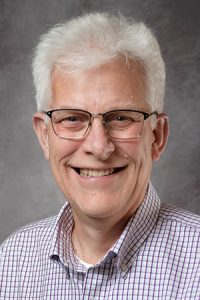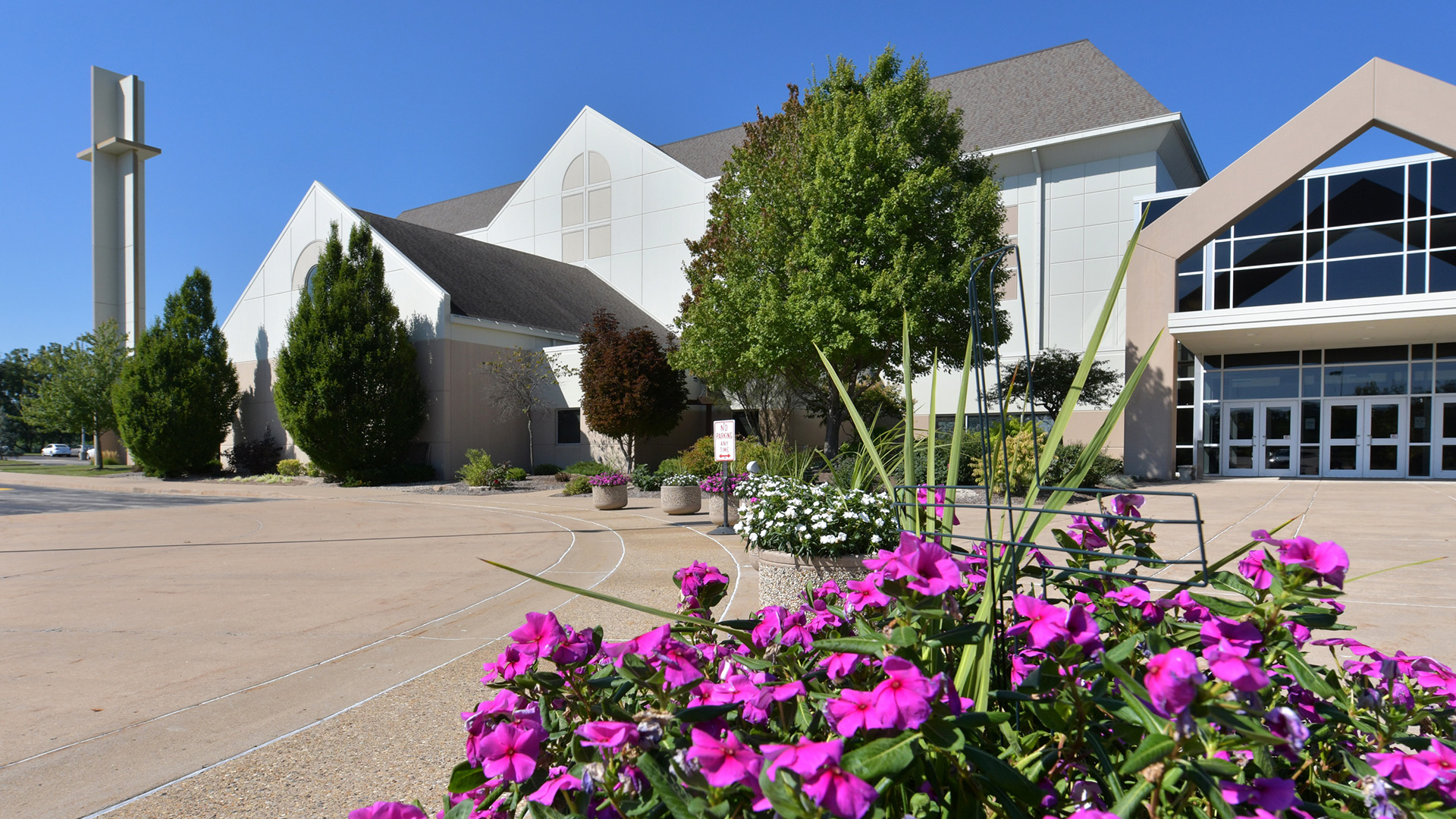Is bigger better? If it means connecting more people with the gospel, the answer is yes, say church leaders
“For where two or three gather in my name, there am I with them.” Matthew 18:20
Churches, like people, come in all shapes and sizes. They can range from the idyllic country chapel to stadium-sized “megachurches” capable of accommodating thousands of the faithful in well-lit, air-conditioned comfort.
While central Illinois has nothing that compares with true megachurches in places like Nigeria, Indonesia and Brazil, where the reported seating capacity can reach 100,000, the region has seen the rise of what many observers would consider to be “big” congregations.
Grace Presbyterian Church
Grace Presbyterian Church, at 8607 Illinois Route 91, can lay claim to the title of grandfather of central Illinois’ large churches. Its roots go back to 1862, when Sunday School classes were held in railroad cars for children of Civil War veterans.
Grace Mission Church was formed in 1868 and grew up in several Peoria locations before landing at the corner of Forrest Hill and Knoxville in 1957. It was there that Senior Pastor Bruce Dunn began expanding the church’s ministry using mass media. Grace’s radio ministry was inaugurated in 1951, and a television outreach took to the airwaves in 1974.
“(Dr. Dunn) is kind of a legendary figure around here,” said Greg Grindinger, adult ministry pastor at Grace Presbyterian. “A lot of churches have TV ministries now but he was ahead of his time in many ways.”
Grace Alive still airs at 10 a.m. Sunday mornings on HOI ABC 25.2, and on radio at 9 a.m. on WBNH 88.5 FM.
The church, an affiliate of the Presbyterian Church in America (PCA), moved to its current suburban location in 2010 after outgrowing the Knoxville facility (now occupied by St. Paul Baptist Church). Average attendance at Sunday morning services is now about 1,200, Grindinger said.
Viewed as a small business, Grace Presbyterian could be a significant employer. From the senior pastor to the children’s needs coordinator to the campus outreach resource director, Grace Presbyterian lists more than 30 employees on its website.
“While Grace is a larger church, the pastoral staff make a very intentional effort to keep it feeling like a small church,” making sure everyone has “a community to get plugged into,” said Ben Learned, a 23-year-old member.
Ann White and her husband, Steve, have moved away from and back to Peoria three times in their married life. They always return to Grace Presbyterian, finding that the size of the church family fits their needs.
“There are just so many things to get involved in,” Ann said.
“We’re church for all generations, working together,” Grindinger said. “We’re not just young people, not just middle aged, not just elderly. We have all different ages here and we like it like that.”
Senior Pastor Zach Rogers just arrived at Grace Presbyterian in April, but understanding the past gives him hope for the future.
“My prayer for our church is that we would be an increasing blessing to the city of Peoria for another 150 years,” he said.
Richwoods Christian Church
Richwoods Christian Church, 8115 N. Knoxville Ave., also saw dramatic increases in attendance after moving to a new, larger facility.
“The church really rocketed” after pulling up stakes from a building on Terra Vista Drive, said lead Pastor Chad Manbeck. The neighborhood church had a capacity of about 300 and poor visibility. Since 2010, Richwoods has made its home in what used to be a grocery store in a high-traffic, mostly retail area of North Knoxville, while doubling its seating capacity.
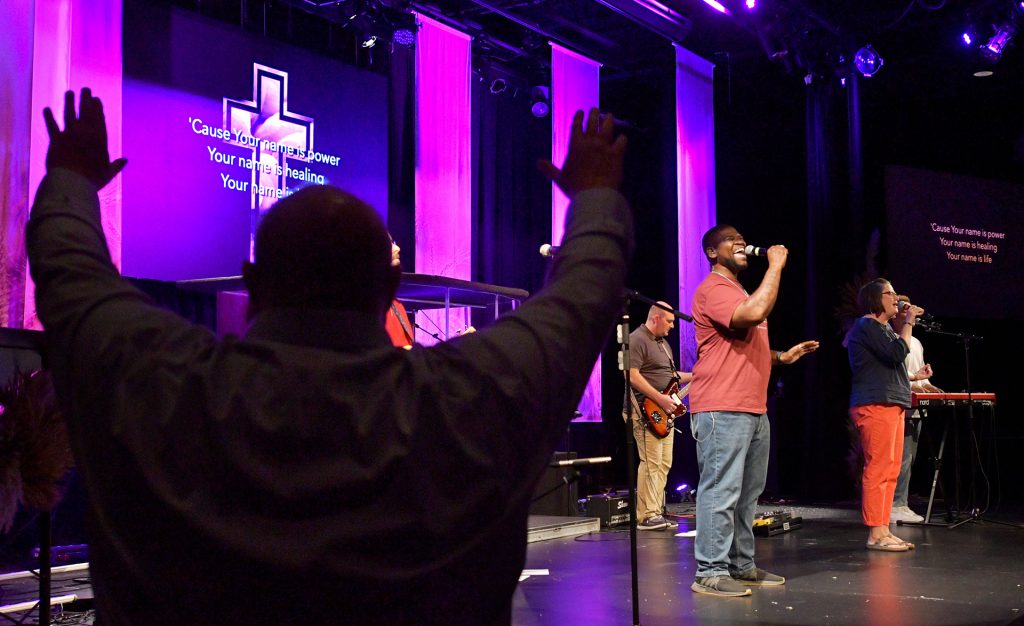
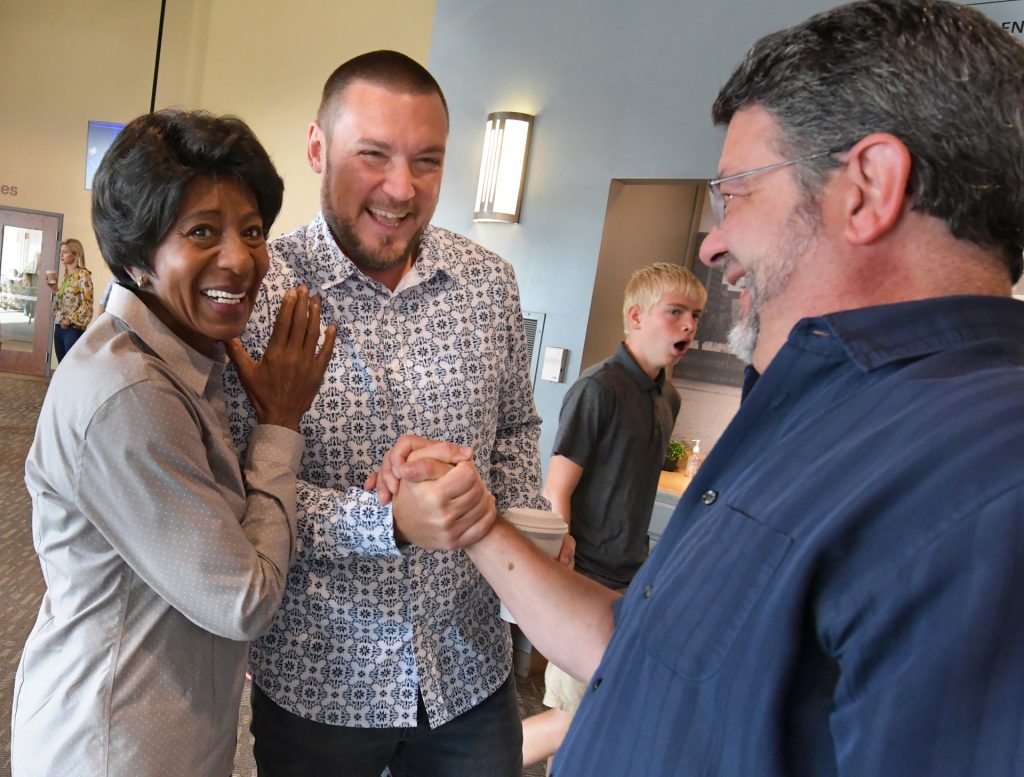
Nonetheless, church leaders work hard to maintain a personal connection. The design of the Worship Center is such that no one is more than 70 feet away from the worship leader, said Manbeck.
He describes the church membership as a mix of ages, although it is trending younger as married couples with children gravitate toward Richwoods. He said they also have a strong nucleus of members in their 50s and 60s.
The church has become a “joyous respite,” said Manbeck. ““Our hope, at a bare minimum, is that if you come to this church, you will find joy, even if you don’t agree with what I’m saying, and for an hour and a half, get a short respite from what is going on in your life.”
By 2013, Richwoods had become one of the largest churches in town, said Manbeck. Average attendance at the two Sunday morning services is around 950, while total membership is about 1,400. Attendance fell to around 300 during COVID, but the numbers have steadily returned.
Grace Church
Grace Church was established in Morton in 1958. It outgrew its building on Fourth Street — now home to Morton School District 709 offices — and moved to the east edge of town at the intersection of Tennessee and Jefferson Streets. Its landmark giant cross is visible from I-74 and for many miles around.
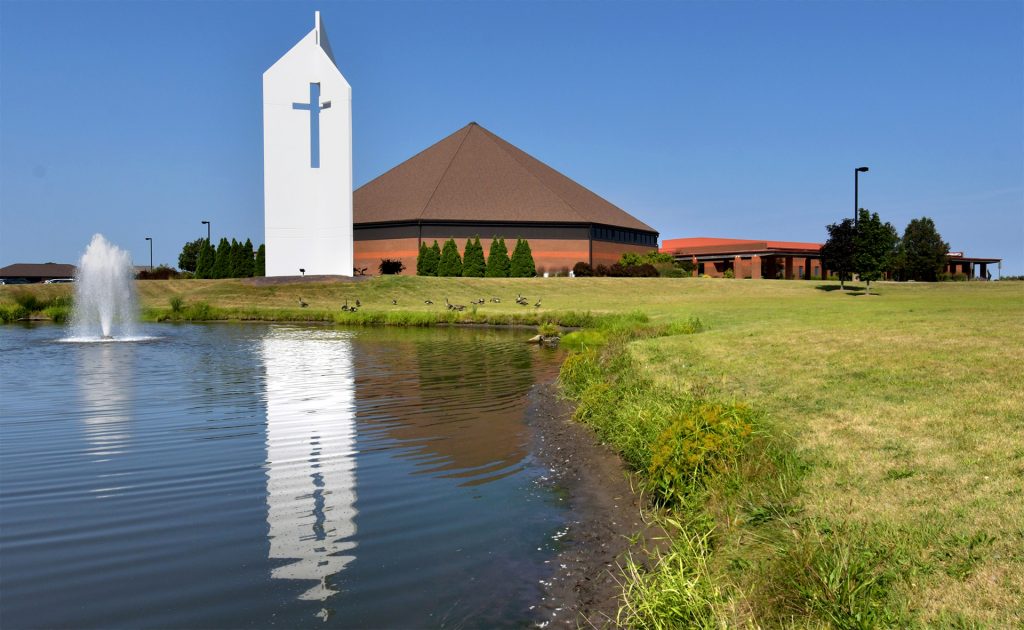
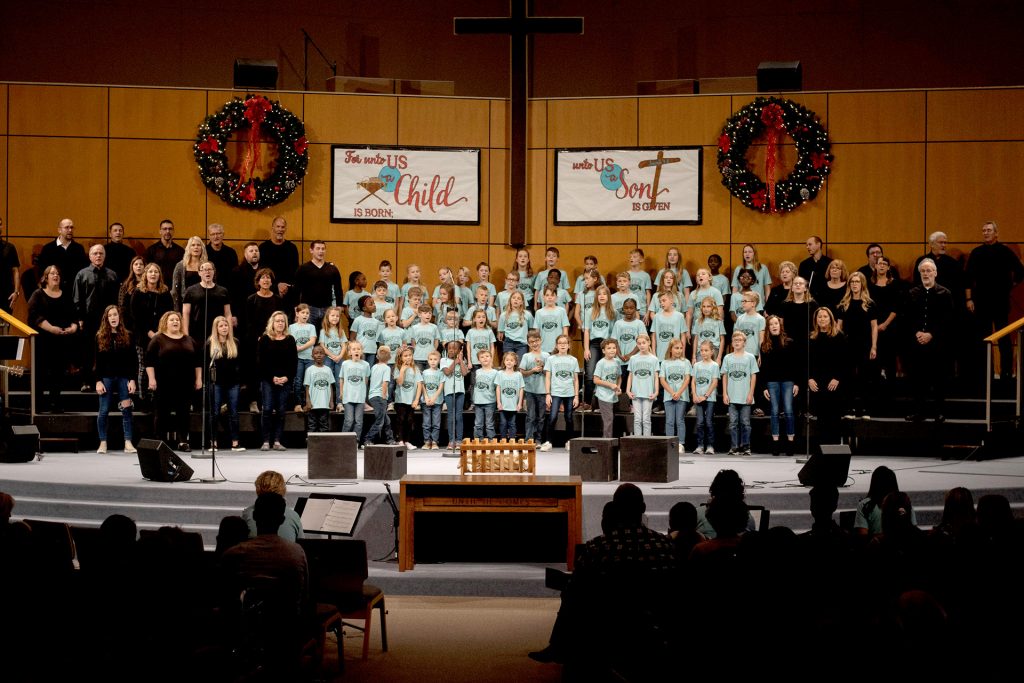
About 750 congregants attend Sunday worship services, said Senior Pastor Jonathan Farrell. Most are from the Morton ZIP code 61550.
“We don’t count online attendance, but streaming is available live through our website,” Farrell said. The church is affiliated with the Fellowship of Evangelical Services, one of about 80 across the Midwest.
Farrell said he believes church is not about coming to a place, but about being part of a family.
“When I’m talking to people in the community, I don’t ask them, ‘Do you have a church that you go to?’ because I think a lot of the time that’s the default perspective. It should be, ‘Do you have a church family that you are part of?’ That speaks to relationships and community.”
Is bigger better? “I wouldn’t affirm that bigger is better,” answered Ferrell. “We are just thankful for the many churches in our community preaching the gospel and loving people well.
“We always want to be welcoming for others to join us while also serving those who are a part of us.”
A church with more facilities and staff is able to create opportunities to do ministry in creative ways, said Ferrell. At Grace Church, Upward Basketball is a prime example.
As many as 400 boys and girls in first to sixth grade converge on the church’s two gymnasiums on Saturday afternoons from January to March for instructional basketball, cheerleading and religious devotions.
“We teach the fundamentals of basketball, but even beyond that, it’s parents and others in the community investing in these boys and girls,” Ferrell said. “We are concerned with the whole child, not just whether they can do a crossover dribble.”
Masters of media
One thing that most large churches seem to have in common is extensive use of the internet and social media to communicate with the wider world.
Technology allows his church to reach the homebound, the elderly and those who miss regular services for any reason, said Grindinger. It also connects people with teaching materials and resources to grow their faith.
Manbeck said 70% of giving at Richwoods church is online. “Very few checks are written nowadays,” he said.
When COVID shut down churches in 2020, many were already geared up to stream services live. Entire Sunday morning services are archived on church websites and YouTube channels.
“People are used to getting everything immediately through the internet,” Grindinger said. “Technology has been our friend and we have what it takes to make it happen.”
Livestreaming and other digital resources are available on the Grace Church website, but Ferrell said the church is cautious about relying on media at the expense of meeting in person.
“We’ve grown convinced that to be a church, we have to, whenever possible, get together as a church,” he said.
“We use online so people can check us out before they come and check us out,” said Manbeck, drawing parallels to a virtual tour of a bed and breakfast or a web-based restaurant menu.
Big churches have more resources for outreach. Grace Presbyterian, for example, supports 70 missionary families in 20 countries and has had a campus outreach program at Bradley University since 2007. That ministry has expanded to Eastern Illinois University, Illinois State University, Illinois Central College and schools in Michigan.
Vacation Bible school also is big at Grace Presbyterian, with about 400 adult volunteers serving 700 children of all ages. Accommodation is made for special needs children and adults. Hundreds take advantage of classes in English as a second language.
Richwoods, meanwhile, is involved in a new partnership with Peoria Rescue Ministries to help homeless people find resources to get off the street. Manbeck said they also work with Midwest Food Bank and Southside Christian Academy, among others.
“Each week, we remind our church family that we are ‘sent’ people — called by Jesus to make a difference in how we live where he has placed us,” Ferrell said. That includes inviting others to share in their church family, and other times it means sharing the facility with others, like hosting Camp of Champions each summer or making the facility available for public school functions.
Sunday morning services are just the tip of the iceberg for most of these large churches, with something happening almost every day of the week.
“We’re a busy church but we’re not about being busy,” said Grindinger. “Our number one goal is to help people have a relationship with God through faith in Jesus Christ. If people learn to trust in Jesus through our humble efforts, then we’ve succeeded.”
The more the merrier
Other institutions that may fit the central Illinois megachurch definition include Northwoods Community Church, which sits on a college-sized campus along Allen Road in North Peoria. Founded in 1990, the church’s goal, as expressed on its website, is to reach 150,000 people in the greater Peoria area. Thousands attend multiple Sunday services, and thousands more connect through livestreaming and social media. A second Northwoods campus has been planted in Canton.
Summit Point Church is tucked into a residential area on Cimmeron Drive in East Peoria but is highly visible from I-74 heading east. Launched in 2006 at Morton High School, the church flourished and by 2012 had opened its present campus.
Heading west out of Peoria on U.S. Route 150, one is likely to encounter Bethany Baptist Church, which traces its roots to meetings at Richwoods School House in 1877. Bethany experienced “exponential growth” in the early 2000s, which included the planting of Living Hope Community Church in Bartonville in 2003 and Bethany Community Church in Washington in 2008. Worship services at the Heinz Lane campus began in 2010.
